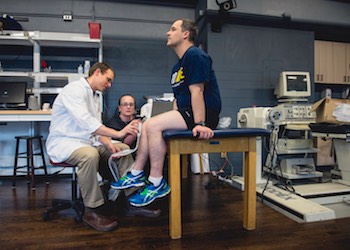Behavior, Engagement, & Health Technology Assessment (BEhTA) Lab
The ßEhTA lab seeks to facilitate improved medical decision making within rehabilitation at the level of the individual, the group, and society. We like to ‘beta test’ ideas from the social sciences like economics and behavioral science in the rehabilitation space. At the individual level, we use a combination of behavioral and economic approaches to support self-management and to increase participation in therapeutic interventions. At the societal level, we use tools of health technology assessment to inform policy decisions.
Current projects:
Behavior
Developed a software infrastructure for clinicians and researchers to use and test Brief Action Planning.
- Funding: Computer-guided Action Planning to Support Physical Activity (CAPPA) for Employees with Chronic Knee Symptoms. R21AR081007-01A1
- Collaborations:
- Collaboration with Ubiquitous Computing (UBICOMP lab) at Marquette University.
- Northwestern University
- Rush University
- Advocate Aurora Health
- Blue Cross Blue Shield of Illinois
Engagement
Patient-Centered Outcomes Research for Employees (PCORE) of Milwaukee’s Near West Side.
Health Technology Assessment
Using a Health Technology Assessment Framework for Evaluating the Utilization and Efficiency of Wearable Exoskeletons for SCI Rehabilitation, is persons with SCI at the C7 to S1 level, designated AIS A to D.
This project is part of NIDILRR’s Model Systems programs in Spinal Cord Injury (SCIMS). Robotic exoskeletons are new devices in the management of spinal cord injury. They promise to open new opportunities for participation in society by facilitating community ambulation. They are primarily being used as research devices and we assessed whether there is a business case for using these devices for locomotor training of people with spinal cord injury in conventional rehabilitation environments. We followed up the business case assessment with a cost-effectiveness analysis to see which strategy provides best value for money. Spoiler: the locomotor training strategy that provides best value for money depends on injury type
- ßEhTA Lab’s role:
- Lead Cost-Effectiveness Analysis of locomotor training strategies link to paper
- Lead Budget Impact Analysis of robotic exoskeleton use for locomotor training in people with spinal cord injury - link to paper




